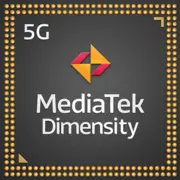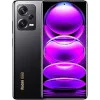MediaTek Dimensity 1080

MediaTek Dimensity 1080: the Ideal Balance for Modern Smartphones
April 2025
Introduction
MediaTek Dimensity 1080 is a mobile processor that continues the "golden mean" tradition: it offers sufficient performance for most tasks, energy efficiency, and support for modern technologies while remaining budget-friendly. As of 2025, the chip remains popular in mid-range smartphones ($300–$450). In this article, we will explore what sets it apart from competitors, who it is suitable for, and which usage scenarios reveal its potential.
1. Architecture and Process Technology: The Foundation of Efficiency
8-Core CPU and 6nm Technology
The Dimensity 1080 is built on a 6-nanometer process technology, ensuring a balance between performance and power consumption (TDP - 4W). The CPU architecture includes:
- 2 High-Performance Cortex-A78 Cores with a frequency of up to 2.6 GHz for resource-intensive tasks such as gaming, video rendering, and AI work.
- 6 Power-Efficient Cortex-A55 Cores at 2.0 GHz for background processes, which reduces heating and battery consumption.
Mali-G68 MP4 GPU
The Mali-G68 MP4 graphics accelerator with four compute units supports:
- Displays with a refresh rate of up to 144 Hz.
- Resolution up to Full HD+ (2520×1080 pixels).
- ARM’s HyperEngine 5.0 energy-saving technologies for smooth gaming.
Key Feature — optimization for gaming with high graphical settings, but without extreme demands (e.g., Genshin Impact at medium settings).
2. Real-World Performance
Gaming
- In Geekbench 6, the chip scores 969 points (Single-Core) and 2421 (Multi-Core). This is sufficient for comfortable gameplay in PUBG Mobile, Call of Duty: Mobile, or Honkai: Star Rail at medium or high settings (60 FPS).
- The Mali-G68 MP4 lags behind flagship GPUs (like the Adreno 740 in Snapdragon 8 Gen 2), but shows stability for its segment thanks to HyperEngine optimization.
Multimedia
- Supports 4K HDR video (recording and playback) and AV1 codecs for streaming.
- Hardware acceleration for image processing: smartphones with this chip often feature cameras up to 200 MP (e.g., Xiaomi Redmi Note 13 Pro+).
AI Applications
- The built-in AI processor APU 3.0 accelerates scene recognition in the camera, noise cancellation in the microphone, and the operation of voice assistants.
- For instance, the “Night Mode” processes images 20% faster than with Dimensity 920.
Power Consumption and Heating
- Thanks to the 6nm process technology and task segregation between cores, the chip rarely overheats, even during extended sessions.
- In PCMark tests (office application usage), smartphones with the Dimensity 1080 lose about 12% battery charge per hour.
3. Integrated Modules: The Connection of the Future
5G Modem and Wi-Fi 6
- The integrated modem supports Sub-6 GHz 5G with a peak speed of up to 2.77 Gbit/s.
- Wi-Fi 6 (802.11ax) ensures stable connections in environments with many devices (like offices or shopping centers).
Bluetooth 5.3 and Satellite Navigation
- The low power consumption of Bluetooth 5.3 is beneficial for wireless headphones and smartwatches.
- Support for GPS, GLONASS, Galileo, and BeiDou ensures navigation accuracy, but there is no satellite communication (as in the iPhone 14+).
4. Comparison with Competitors
Snapdragon 7 Gen 2
- Better GPU (Adreno 710) and support for cameras up to 320 MP.
- But more expensive: smartphones with Snapdragon 7 Gen 2 start at $450.
Exynos 1380
- Comparable in performance, but has poorer game optimization.
- Tends to overheat under load more often.
Dimensity 1200 (Previous Generation)
- The Dimensity 1080 has 15% better energy efficiency, but a lower peak CPU frequency (2.6 GHz vs. 3.0 GHz).
Conclusion: The Dimensity 1080 wins on price and balance.
5. Usage Scenarios
Gaming
- Suitable for casual gamers: games like Roblox or Mobile Legends run smoothly. For Genshin Impact, lower settings will be necessary.
Everyday Tasks
- Social media, streaming, multitasking — no lags.
Photo and Video
- The chip shines in smartphones with good optics. For example, the Realme 11 Pro with a 200 MP camera captures detailed photos even in low light.
6. Pros and Cons
Pros:
- Energy efficiency: up to 8 hours of screen time.
- Support for 5G and Wi-Fi 6.
- Affordable device pricing.
Cons:
- Mali-G68 MP4 is weaker than competitive GPUs.
- No support for 2K displays.
7. Tips for Choosing a Smartphone
- Cooling: Look for models with vapor chambers or graphite coatings (e.g., POCO X5 Pro).
- RAM: A minimum of 8 GB for gaming.
- Battery: 5000 mAh compensates for any load.
Typical Devices:
- Xiaomi Redmi Note 13 Pro ($349).
- Realme 11 Pro+ ($399).
- vivo V29 Lite ($329).
8. Final Conclusion
The MediaTek Dimensity 1080 is the perfect choice for those looking for a modern smartphone without overpaying for flagship features. It is suitable for:
- Students — long battery life and smooth multitasking.
- Travelers — quality photos and stable navigation.
- Casual Gamers — comfortable gaming experience.
The main benefits: optimal price, 5G support, and energy efficiency. If you don't need ultimate FPS in games or the ability to shoot 8K videos, the Dimensity 1080 will be a reliable companion for 2-3 years.
Basic
6x 2 GHz – Cortex-A55
GPU Specifications
Connectivity
Memory Specifications
Miscellaneous
Benchmarks
Phones with Dimensity 1080









Comparison of Devices with Dimensity 1080
Compared to Other SoC
Share in social media
Or Link To Us
<a href="https://cputronic.com/en/soc/mediatek-dimensity-1080" target="_blank">MediaTek Dimensity 1080</a>